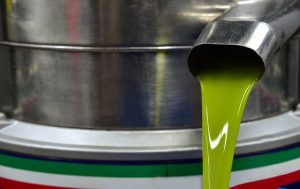Transforming the Food Industry With Precision Temperature Control
The food industry is experiencing a significant shift, largely driven by advancements in temperature control technology. Effective temperature management is essential for ensuring food safety, extending product shelf life, and maintaining high quality. This blog delves into how precise temperature control is reshaping the food industry and the advantages it offers to both businesses and consumers.
Why Temperature Control Matters for Food Safety
Temperature management is a cornerstone of food safety. Bacteria and pathogens can proliferate in specific temperature ranges, posing risks of foodborne illnesses. By maintaining accurate temperature settings, food businesses can prevent the growth of harmful microorganisms, thereby minimizing contamination risks. This is especially critical in sectors such as meat processing, dairy, and seafood, where rigorous temperature control is essential for compliance with safety standards and for protecting consumer health. Modern temperature control systems in the food industry often utilize advanced technologies such as Pt100 temperature sensors and thermal cameras to ensure precise temperature management and real-time monitoring throughout the supply chain.
Innovative Technologies Improving Temperature Management
Technological advancements have greatly enhanced temperature control systems within the food industry. Modern smart sensors and IoT (Internet of Things) devices provide real-time monitoring and data collection. These technologies enable continuous temperature tracking throughout the food supply chain—from production and storage to transportation and retail. Automated systems can promptly alert operators to any temperature deviations, allowing for immediate corrective measures and reducing spoilage risks.
Boosting Storage Efficiency and Product Longevity
Precise temperature control plays a crucial role in extending the shelf life of perishable items by slowing down the spoilage process. In cold storage facilities, maintaining exact temperatures helps keep fruits, vegetables, and dairy products fresh for longer periods. This not only cuts down on food waste but also improves inventory management and reduces costs associated with spoilage. Longer product shelf life means better quality for consumers and increased efficiency for businesses.
Ensuring Consistent Quality and Uniformity
Consistent temperature control is key to maintaining high-quality and uniform food products. In processes like baking, brewing, and chocolate production, precise temperature management ensures that recipes are followed accurately, leading to consistent taste and texture. For example, in chocolate manufacturing, temperature control during tempering is crucial for achieving the right texture and sheen. Effective temperature control systems help maintain these standards, resulting in higher-quality products and greater customer satisfaction.
Cutting Energy Costs and Enhancing Efficiency
Modern temperature control systems are designed to be energy-efficient, offering substantial cost savings for food businesses. Features such as variable-speed compressors and intelligent defrost cycles help optimize energy use based on real-time requirements. Businesses can lower operational costs and contribute to environmental sustainability by reducing energy consumption. Efficient temperature management supports green initiatives and meets the growing demand for eco-friendly practices in the food industry.
Looking Ahead: The Future of Temperature Control
The future of temperature control in the food industry is promising, with ongoing technological advancements on the horizon. Innovations like blockchain for improved traceability and AI-driven predictive analytics for proactive management are expected to refine temperature control processes further. These developments will enhance accuracy and efficiency, playing a crucial role in shaping the future of the food industry with higher standards of safety, quality, and sustainability.
Conclusion
Precision in temperature control is revolutionizing the food industry by boosting safety, extending shelf life, enhancing product quality, and reducing operational costs. As technology evolves, businesses can optimize their temperature control systems to achieve greater efficiency and sustainability. Looking forward, advancements in temperature management will continue to drive positive change in the food industry, benefiting both businesses and consumers alike.




